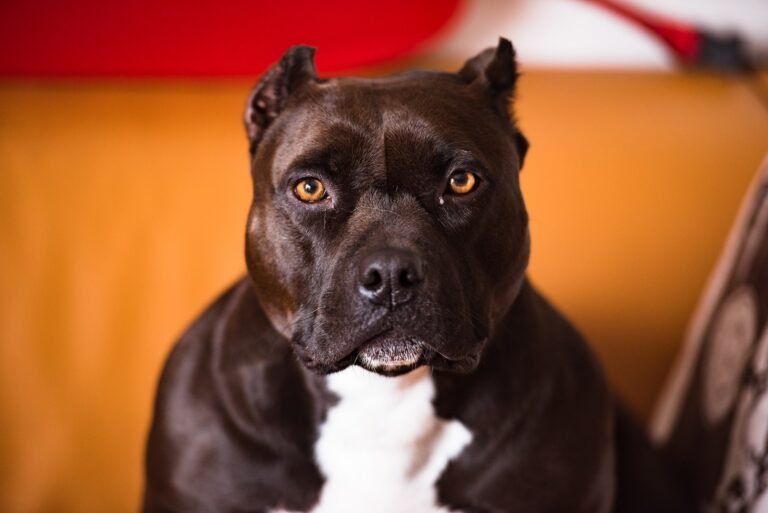My dog has a toothache – Treatment and causes.

Dog Dental abscesses, commonly called phlegmons, are accumulations of pus in the gumline caused by bacterial infection. Their appearance is usually associated with severe pain in the oral cavity, leading to a decrease in appetite or even complete anorexia in dogs that suffer from them.
You have noticed that “My dog has a toothache” and you want to know more about dental abscesses in dogs? If this is the case, we invite you to continue reading this article in which we will talk about the possible treatment and the main causes.
What is a dental abscess in dogs:
A phlegmon, or dental abscess, is an accumulation of pus in the gumline that occurs as a result of a bacterial infection.
The appearance of an abscess or a phlegmon is always linked to the existence of an untreated dental disease. It is therefore essential to periodically check the oral cavity of dogs to detect any alterations and thus avoid such complications.
Symptoms of Tooth Abscess in Dogs:
The appearance of a dental abscess in dogs is usually manifested by the following symptoms:
Lack of appetite or anorexia due to pain in the oral cavity. Some dogs refuse to eat dry or hard foods and only tolerate soft, moist foods.
- Swelling of the face or around the eyes.
- Swollen regional lymph nodes.
- Fever
- Sialorrhea: excessive drooling.
- Halitosis
It should be mentioned that in the most serious cases or in the absence of treatment, the bacteria causing the oral infection can reach the bloodstream and, from there, trigger secondary infections that will affect other organs. . In these cases, other symptoms may be observed simultaneously depending on the organ or tissue affected.

Diagnostic de l’abcès dentaire chez le chien .
Le diagnostic de l’abcès dentaire chez le chien repose principalement sur deux points :
- Un examen de la cavité buccale : il est souvent nécessaire d’endormir l’animal pour un examen plus approfondi de la cavité buccale.
- Radiographies orales : pour détecter l’état des dents touchées par l’abcès.
- Treatment of dental abscess in dogs
Now you know what a dental abscess in dogs is, now we need to address the question of how to cure dental abscess in dogs. The treatment of dental abscesses is based on:
Administration of broad-spectrum antibiotics.
Opening the abscess to drain purulent material and clean the affected area.
However, the antibiotic used to treat the oral infection of the dog must be prescribed by the veterinarian. On the other hand, in addition to treating the abscess itself, it is necessary to treat the pathology that caused the abscess. In this regard :
- In case of periodontal disease: moist foods and sugary foods should be eliminated from the diet and specific dental treatments such as splint of mobile teeth, extraction of irreversible teeth, elimination of periodontal pockets, etc.
- In the event of a tooth fracture: in most cases, extraction of the fractured tooth is necessary, although in dogs that are required to keep all their teeth (e.g. competition dogs), it is possible to perform root canal treatment and reconstruction of the tooth.
- In case of tooth decay: it may be enough to perform a root canal treatment, but in advanced cases, it may be necessary to extract the affected tooth(s).
As you can see, in order to reduce the inflammation of the gums of a dog, you must first find the cause that led to the development of the dental abscess. This is why it is very important to go to a veterinary center.

Prevent dental abscesses in dogs:
As we have already explained, dental abscesses appear as a consequence of untreated dental pathologies. From this perspective, one would tend to believe that the appearance of abscesses can be easily avoided by preventing this type of disease.
Concretely, the measures to take into account to prevent the appearance of a dental abscess in dogs are as follows:
- Tooth brushing: from the permanent dentition (at the age of 7-8 months), the development of dental plaque must be prevented by correct tooth brushing. To do this, use toothbrushes and special toothpaste for dogs and clean them every 2 or 3 days.
- Chewable snacks: this type of product helps prevent the onset of periodontal disease.
- Oral hygiene: in animals particularly prone to the formation of tartar, it may be advisable to clean their teeth every 1 to 2 years.
- Avoid hard objects: Dogs should be prevented from chewing or playing with very hard objects (like stones or the like), which can cause dental fractures.
If this article My dog has a toothache – Dental abscess in dogs was useful and interested you, we leave you a video from our channel that deals with bad breath in dogs – causes and solutions.






